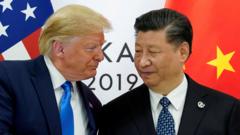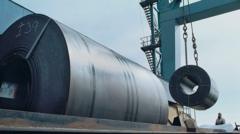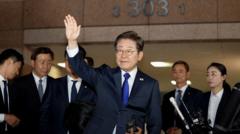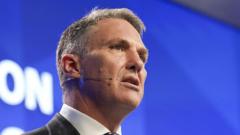This article explores India's historical responses to economic challenges, the current trade landscape, and the possible outcomes of rising global protectionism.
**India at a Crossroads: Will Trump's Tariff War Inspire Reforms?**
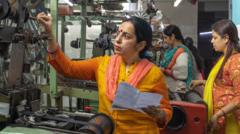
**India at a Crossroads: Will Trump's Tariff War Inspire Reforms?**
As the US wage a tariff war, India contemplates potential economic reforms and further opening its market.
With rising tensions over tariffs under President Trump's administration, India finds itself at a crucial juncture in its economic development. Historically, economic reforms in India have emerged during periods of distress, most notably in 1991 when the country opened its markets amid a financial crisis. Presently, as Trump labels India a “tariff king,” the country confronts the dilemma of whether to maintain or dismantle its protective measures against foreign goods.
India's trade-weighted import duties rank among the highest globally at 12%, which starkly contrasts with averages in the U.S. (2.2%), China (3%), and Japan (1.7%). The reliance on high tariffs has made it costly for Indian firms tied to international supply chains, undermining competitiveness and causing a notable trade deficit despite growth in service exports.
As trade relations become increasingly fraught, India has made preliminary moves indicating a potential pivot away from protectionism. In the lead-up to Prime Minister Modi's discussions with Trump, tariffs on select U.S. products were lowered, signaling a willingness to negotiate. Commerce Minister Piyush Goyal has been proactive, undertaking visits to the U.S. to secure favorable trade terms, amidst fears that India might face tariffs impacting various sectors, potentially incurring $7 billion annually.
Despite historical efforts to retreat from isolationist policies, current trends suggest that Modi's administration may still cling to a protectionist mindset, complicating efforts for reform. Analysts argue that the past decade of rising tariffs has hampered manufacturing growth and job creation, ultimately stifling India's broader economic potential.
The ongoing trade conflict presents a litmus test for India’s economic positioning. While some experts advocate for lowering tariffs to bolster India’s global trade role and attract foreign investment, concerns about flooding the domestic market with cheap foreign goods loom large.
As discussions around trade continue, some experts posit that India could assume a leadership role in reshaping global trade dynamics. However, achieving this vision will require not just tariff reductions but also an overhaul of domestic policies to elevate skills training and manufacturing capacity.
In light of these dynamics, India stands at a pivotal moment where embracing reform could yield substantial economic benefits, but inaction could exacerbate existing vulnerabilities. The long-term success of India's strategy will hinge upon its ability to navigate these challenges while seizing opportunities to broaden its market beyond the constraints of current tariff wars.
India's trade-weighted import duties rank among the highest globally at 12%, which starkly contrasts with averages in the U.S. (2.2%), China (3%), and Japan (1.7%). The reliance on high tariffs has made it costly for Indian firms tied to international supply chains, undermining competitiveness and causing a notable trade deficit despite growth in service exports.
As trade relations become increasingly fraught, India has made preliminary moves indicating a potential pivot away from protectionism. In the lead-up to Prime Minister Modi's discussions with Trump, tariffs on select U.S. products were lowered, signaling a willingness to negotiate. Commerce Minister Piyush Goyal has been proactive, undertaking visits to the U.S. to secure favorable trade terms, amidst fears that India might face tariffs impacting various sectors, potentially incurring $7 billion annually.
Despite historical efforts to retreat from isolationist policies, current trends suggest that Modi's administration may still cling to a protectionist mindset, complicating efforts for reform. Analysts argue that the past decade of rising tariffs has hampered manufacturing growth and job creation, ultimately stifling India's broader economic potential.
The ongoing trade conflict presents a litmus test for India’s economic positioning. While some experts advocate for lowering tariffs to bolster India’s global trade role and attract foreign investment, concerns about flooding the domestic market with cheap foreign goods loom large.
As discussions around trade continue, some experts posit that India could assume a leadership role in reshaping global trade dynamics. However, achieving this vision will require not just tariff reductions but also an overhaul of domestic policies to elevate skills training and manufacturing capacity.
In light of these dynamics, India stands at a pivotal moment where embracing reform could yield substantial economic benefits, but inaction could exacerbate existing vulnerabilities. The long-term success of India's strategy will hinge upon its ability to navigate these challenges while seizing opportunities to broaden its market beyond the constraints of current tariff wars.


